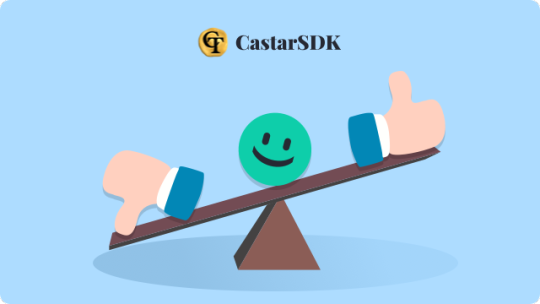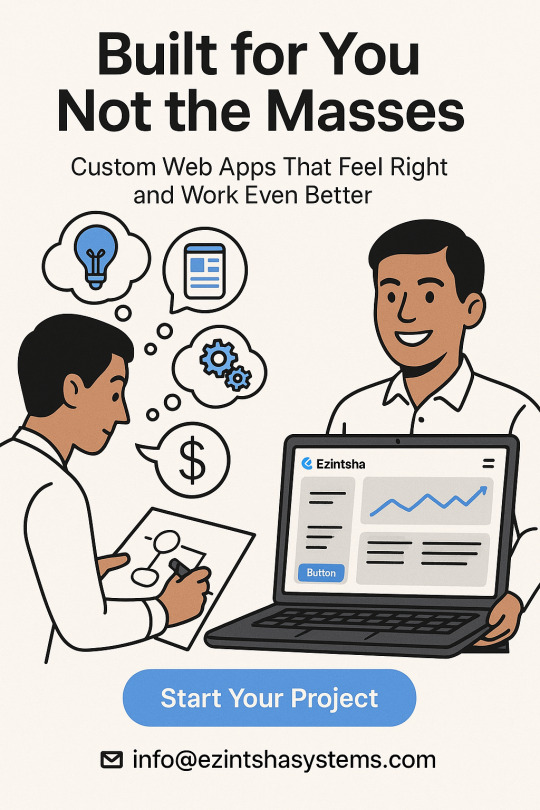#Mobile App Development Tool
Explore tagged Tumblr posts
Text

🎨 Build apps that work seamlessly across iOS and Android! 📱✨
Discover the Top Cross-Platform App Development Tools to save time, cut costs, and deliver exceptional user experiences. 🚀💻
3 notes
·
View notes
Text
#software company in india#software development company in noida#Website and Mobile App Development Company#Android and iOS App Development company#website and mobile app development company#mobile app development tools android and ios#ios and android app development services#ios and android app development#Web Development Company#Ecommerce Application Development#Software Development Company in Delhi/Ncr#Software Development Company in India#Software Development Company in Noida#Software Development Company#App Development Company in Delhi/Ncr#App Development Company in Noida#ios mobile app development company in Noida#ios mobile app development in Noida#Billing & Invoice Software Development Company in Noida#Billing & Invoice Software Development Company Near me#mobile app development company#website designing company in delhi ncr
2 notes
·
View notes
Text
0 notes
Text
ChatGPT and DeepSeek: Which AI Tool Delivers Better User Experience?
Compare two top AI tools—ChatGPT and DeepSeek AI—and discover which one truly enhances user experience.
#Which AI Tool Should You Choose#it consultant company#Custom Web Application Development Services#custom app development company#ChatGPT vs DeepSeek#best mobile app development company in usa
0 notes
Text
CHATBOTS ARE REVOLUTIONIZING CUSTOMER ENGAGEMENT- IS YOUR BUSINESS READY?

CHATBOTS & AI: FUTURE OF CUSTOMER ENGAGEMENT
Customers want 24/7 access, personalized experiences, and quick replies in today’s digital-first environment. It can be difficult to manually meet such requests, which is where AI and machine learning-powered chatbots come into play.
WHAT ARE CHATBOTS?
A chatbot is a computer software created to mimic human speech. Natural language processing and artificial intelligence (AI) enable chatbots to comprehend customer enquiries, provide precise answers, and even gain knowledge from exchanges over time.
WHY ARE CHATBOTS IMPORTANT FOR COMPANIES?
24/7 Customer Service
Chatbots never take a break. They offer 24/7 assistance, promptly addressing questions and enhancing client happiness.
Effective Cost-Scaling
Businesses can lower operating expenses without sacrificing service quality by using chatbots to answer routine enquiries rather than adding more support staff.
Smooth Customer Experience
Chatbots may recommend goods and services, walk customers through your website, and even finish transactions when AI is included.
Gathering and Customizing Data
By gathering useful consumer information and behavior patterns, chatbots can provide tailored offers that increase user engagement and conversion rates.
USE CASES IN VARIOUS INDUSTRIES
E-commerce: Managing returns, selecting products, and automating order status enquiries.
Healthcare: Scheduling consultations, checking symptoms, and reminding patients to take their medications.
Education: Responding to questions about the course, setting up trial sessions, and getting input.
HOW CHATBOTS BECOME SMARTER WITH AI
With each contact, chatbots that use AI and machine learning technologies get better. Over time, they become more slang-savvy, better grasp user intent, and provide more human-like responses. What was the outcome? A smarter assistant that keeps improving to provide greater customer service.
ARE YOU READY FOR BUSINESS?
Using a chatbot has become a strategic benefit and is no longer optional. Whether you manage a service-based business, an online store, or a developing firm, implementing chatbots driven by AI will put you ahead of the competition.
We at Shemon assist companies in incorporating AI-powered chatbots into their larger IT offerings. Smart chatbot technology is a must-have if you want to automate interaction, lower support expenses, and improve your brand experience.
Contact us!
Email: [email protected]
Phone: 7738092019
#custom software development company in india#software companies in india#mobile app development company in india#web application development services#web development services#it services and solutions#website design company in mumbai#digital marketing agency in mumbai#search engine optimization digital marketing#best e commerce websites development company#Healthcare software solutions#application tracking system#document parsing system#lead managment system#AI and machine learning solutions#it consultancy in mumbai#web development in mumbai#web development agency in mumbai#ppc company in mumbai#ecommerce website developers in mumbai#software development company in india#social media marketing agency mumbai#applicant tracking system software#top web development company in mumbai#ecommerce website development company in mumbai#top web development companies in india#ai powered marketing tools#ai driven markeitng solutions
0 notes
Text
Does Monetization Hurt Retention? Here’s How to Balance Both
Monetizing an app sounds simple—until your retention rate drops.
We've all seen it happen: You add interstitial ads, push users toward subscriptions, or introduce a paywall… and suddenly, your daily active users take a hit.
So here's the short answer: yes, monetization can hurt retention. But it doesn’t have to.

1. Why Monetization Affects Retention
Monetization strategies, when poorly implemented, create friction:
Ads interrupt core actions
Subscriptions are pushed before users see real value
Free users feel punished or limited
The result? Users feel like the product is designed to extract value from them—not to deliver it.
2. How to Monetize Without Losing Users
Here's what works:
Keep monetization invisible (when possible). Options like background monetization (e.g. bandwidth sharing SDKs like CastarSDK) run silently, without interrupting the user experience.
Let users choose when to engage. Rewarded ads work better than forced ones. Users watch them on their own terms, for benefits they care about.
Prove value before asking for money. Don’t rush to sell. Give users enough time and freedom to understand your product’s worth.
Use data, not assumptions. Test changes. Track churn after ad impressions. Balance LTV and retention—not just in theory, but in actual usage.
3. The Real Goal: Sustainable Growth
Monetization and retention are not enemies. They're partners—when done thoughtfully.
If you prioritize user trust and design monetization around value (not pressure), it's possible to build an app that grows in both users and revenue.
And if you're looking for a monetization option that doesn't get in the user's way? Start by looking into invisible, zero-disruption models like CastarSDK. No ads. No interruptions. Just passive revenue.
Want to learn more? Check out CastarSDK— built for developers who care about experience and earnings.
1 note
·
View note
Text
#software development#app development#android app development#mobile application development#software development career#mobile app development career#software development engineer#game development#mobile app development community#mobile app development cost in bangladesh#software development roadmap#mobile app development#indie game development#mobile app development resources#development tools#enterprise company#inclusive and accessible hiring policies
1 note
·
View note
Text
Forget one-size-fits-all solutions. At Ezintsha Systems, we create web apps tailored to your business goals. Whether you're launching a startup or streamlining your internal tools, we bring your vision to life with clean, scalable code and a user-first approach. Real solutions for real needs.
Let’s Build Something Great Together
📩 Email us at: [email protected] 🔗 Contact us now and let’s get started

#Custom web app development company#Web app development comapny#Mobile app development company#Android app development company#Software development company#Ezintsha Systems#Technology Development#Tool Development Company
0 notes
Text
How 3D CAD Helps Engineers Perform Thermal Analysis for Spacecraft

The extreme conditions of space pose significant challenges for spacecraft design, particularly in thermal management. Spacecraft experience fluctuating temperatures, intense solar radiation, and the vacuum of space, all of which can impact performance. Thermal analysis is a critical step in spacecraft engineering, ensuring that systems remain operational under these harsh conditions. One of the most transformative tools in this process is 3D CAD (Computer-Aided Design). By integrating CAD with thermal analysis software, engineers can efficiently simulate, analyze, and optimize spacecraft designs.
The Role of Thermal Analysis in Spacecraft Design
Thermal analysis involves predicting how a spacecraft will behave thermally under various conditions. Engineers use simulations to evaluate heat transfer mechanisms such as conduction, convection (if applicable), and radiation. This process ensures that components stay within their operational temperature limits and identifies the need for heaters, radiators, or insulation layers to maintain thermal balance.
Spacecraft thermal analysis typically includes:
Modeling energy exchange factors: Calculating absorbed energy from orbital sources like the Sun and reflected planetary radiation.
Simulating heat dissipation: Predicting how internal components generate and transfer heat during operation.
Designing control systems: Determining heater power requirements and radiator sizing to regulate temperatures.
How 3D CAD Enhances Thermal Analysis
3D CAD tools revolutionize thermal analysis by enabling engineers to create detailed models of spacecraft geometry. These models serve as the foundation for simulations and allow engineers to visualize complex systems under varying environmental conditions. Here’s how 3D CAD contributes to thermal analysis:
1. Accurate Geometry Representation
Spacecraft designs often involve intricate geometries with multiple subsystems. 3D CAD software allows engineers to create highly detailed models that account for every component's size, shape, and orientation. Tools like NX Space Systems Thermal simplify the modeling of large assemblies without requiring manual geometry conversions. This level of detail ensures accurate predictions during simulations.
2. Integration with Thermal Analysis Software
Modern CAD tools are seamlessly integrated with thermal analysis software such as Thermal Desktop or Simcenter 3D Space Systems Thermal. These integrations enable engineers to import CAD models directly into simulation environments without losing fidelity. For example:
Thermal Desktop uses AutoCAD-based models to compute radiative exchange factors and orbital heating via Monte Carlo methods.
Simcenter 3D synchronizes CAD data automatically, reducing errors and improving efficiency during iterative design processes.
3. Material Property Assignment
Thermal performance depends heavily on material properties like conductivity, emissivity, and specific heat capacity. CAD-based tools often include databases of thermophysical properties, allowing engineers to assign realistic materials to spacecraft components. This capability ensures that simulations reflect real-world behavior.
4. Visualization and Post-Processing
Engineers can use CAD-integrated tools to visualize temperature distributions across spacecraft surfaces in 3D. Features like contour plots or scatter plots make it easier to identify hotspots or areas requiring additional thermal control measures. Visualization enhances collaboration among teams by presenting complex data in an intuitive format.
Applications of 3D CAD in Spacecraft Thermal Analysis
Orbital Simulations
Orbital mechanics significantly influence a spacecraft's thermal environment due to changing positions relative to the Sun and Earth. Engineers use 3D CAD models to simulate these dynamics and predict temperature fluctuations over time. For instance, NX Space Systems Thermal enables orbital simulations with synchronized geometry updates for evolving designs
Component-Level Analysis
Thermal analysis extends beyond the spacecraft as a whole—it includes evaluating individual subsystems like electronics or propulsion units. Tools like Solaria Thermal specialize in finite element analysis (FEA) for detailed component-level simulations. Engineers can model copper layers in PCBs or heat dissipation from rocket engines using these tools.
Iterative Design Optimization
Thermal analysis is an iterative process involving multiple design revisions. With CAD-integrated software, engineers can quickly update models based on simulation results without starting from scratch. This agility accelerates development timelines while improving accuracy.
Benefits of Using 3D CAD for Thermal Analysis
The integration of 3D CAD with thermal analysis software offers several advantages:
Efficiency: Automated synchronization between CAD models and simulation tools reduces manual effort.
Accuracy: Detailed geometry and material property assignments result in more reliable predictions.
Cost Savings: Virtual testing minimizes the need for expensive physical prototypes.
Collaboration: Intuitive visualizations enhance communication among engineering teams.
Conclusion
In the realm of spacecraft engineering, thermal analysis is indispensable for ensuring mission success under extreme conditions. The integration of 3D CAD tools with advanced simulation software has streamlined this process, enabling engineers to design more robust systems efficiently. From orbital simulations to component-level evaluations, these tools provide unparalleled accuracy and visualization capabilities.
As space exploration continues to push boundaries, the role of 3D CAD design services in thermal analysis will only grow more critical, empowering engineers to tackle increasingly complex challenges with confidence. Whether designing satellites for Earth's orbit or interplanetary missions, leveraging these technologies ensures that every spacecraft is prepared for its journey into the unknown.
#Thermal Analysis in Spacecraft Design#Spacecraft Design#Thermal Analysis#3D CAD Design#3D CAD Design Services#3d app development services#3d application development#3d mobile app development#3d desktop application development#3d desktop application#3d desktop application development companies#best 3d application development company#3d engineering application development services#3D application development for engineering#3D development tools for engineering applications#3d web application development services#3d mobile application development
0 notes
Text
Elevanco provides affordable UI/UX design services for startups, helping create intuitive and visually appealing digital products on a budget. Our expert team focuses on improving user engagement, increasing conversions, and building brand trust. Whether it's a website or mobile app, we offer scalable, cost-effective solutions tailored to your startup's needs. Contact us at +91-7388885426 today!
#Affordable UI/UX design services for startups#game development services in delhi#Custom game development solutions for startups#Top mobile game development companies near me#Game development services for educational apps#End-to-end game design and development solutions#Mobile Game Development Service#3D Game Development Service in delhi#2D Game Development#AR/VR Game Development#professional game developers for my project#Best game design and development solutions#Best game development tools for creating 3D games
0 notes
Text

How to Balance Fixing Performance Issues and Adding New Features in Web Applications?
In today’s digital landscape, web applications are essential for business operations, marketing, and consumer involvement. As organizations expand and consumer expectations rise, development teams are frequently confronted with the difficult task of balancing two key priorities: addressing performance issues and introducing new features.
While boosting performance improves the user experience and increases efficiency, new features are required to remain competitive and meet market demands. Prioritizing one over the other, on the other hand, might have negative consequences—performance concerns can lead to a poor user experience while failing to innovate can result in a competitive disadvantage.
This blog delves into how to balance improving performance and introducing new features to web apps, allowing firms to satisfy technical and market demands efficiently.
Why Balancing Performance and New Features Is Crucial
A web application‘s success depends on both its performance and its features. However, relying entirely on one might result in imbalances that impair both user happiness and business progress.
Performance:Performance is an important component that directly influences user retention and happiness. Users can become frustrated and leave if the application has slow loading times, crashes, or problems. Ensuring that your web application runs smoothly is essential since 53% of mobile consumers would quit a site that takes more than three seconds to load.
New Features:On the other hand, constantly adding new features keeps users interested and promotes your company as innovative. New features generate growth by attracting new consumers and retaining existing ones who want to experience the most recent changes.
The dilemma is deciding when to prioritize bug fixes over new feature development. A poor balance can harm both performance and innovation, resulting in a subpar user experience and stagnation.
Common Performance Issues in Web Applications
Before balancing performance and features, it’s important to understand the common performance issues that web applications face:
Slow Load Times: Slow pages lead to higher bounce rates and lost revenue.
Server Downtime: Frequent server outages impact accessibility and trust.
Poor Mobile Optimization: A significant portion of web traffic comes from mobile devices and apps that aren’t optimized for mobile fail to reach their potential.
Security Vulnerabilities: Data breaches and security flaws harm credibility and user trust.
Bugs and Glitches: Software bugs lead to poor user experiences, especially if they cause the app to crash or become unresponsive.
Strategic Approaches to Fixing Performance Issues
When performance issues develop, they must be handled immediately to guarantee that the online application functions properly. Here are techniques for improving performance without delaying new feature development:
Prioritize Critical Issues:Tackle performance issues that have the most significant impact first, such as slow loading times or security vulnerabilities. Use analytics to identify bottlenecks and determine which areas require urgent attention.
Use a Continuous Improvement Process:Continuously monitor and optimize the application’s performance. With tools like Google PageSpeed Insights, you can track performance metrics and make incremental improvements without major overhauls.
Optimize Database Queries:Slow database queries are one of the leading causes of web app performance issues. Optimize queries and ensure that the database is indexed properly for faster access and retrieval of data.
Reduce HTTP Requests:The more requests a page makes to the server, the slower it loads. Minimize requests by reducing file sizes, combining CSS and JavaScript files, and utilizing caching.
5. Leverage Caching and CDNs: Use caching strategies and Content Delivery Networks (CDNs) to deliver content quickly to users by storing files in multiple locations globally.
Why Adding New Features is Essential for Growth
In the rapidly changing digital environment, businesses must continually innovate to stay relevant. Adding new features is key to maintaining a competitive edge and enhancing user engagement. Here’s why:
User Expectations:Today’s consumers expect personalized experiences and constant innovation. Failure to add new features can lead to customer churn, as users may feel your web application no longer meets their needs.
Market Differentiation:Introducing new features allows your application to stand out in the marketplace. Unique functionalities can set your app apart from competitors, attracting new users and increasing customer loyalty.
Increased Revenue Opportunities:New features can lead to additional revenue streams. For example, adding premium features or new integrations can boost the app’s value and lead to increased sales or subscription rates.
4. Feedback-Driven Innovation: New features are often driven by user feedback. By continuously developing and adding features, you create a feedback loop that improves the overall user experience and fosters customer satisfaction.
Read More: https://8techlabs.com/how-to-balance-fixing-performance-issues-and-adding-new-features-in-web-applications-to-meet-market-demands-and-enhance-user-experience/
#8 Tech Labs#custom software development#custom software development agency#custom software development company#software development company#mobile app development software#bespoke software development company#bespoke software development#nearshore development#software development services#software development#Website performance testing tools#Speed optimization for web apps#Mobile-first web app optimization#Code minification and lazy loading#Database indexing and query optimization#Agile vs Waterfall in feature development#Feature flagging in web development#CI/CD pipelines for web applications#API performance optimization#Serverless computing for better performance#Core Web Vitals optimization techniques#First Contentful Paint (FCP) improvement#Reducing Time to First Byte (TTFB)#Impact of site speed on conversion rates#How to reduce JavaScript execution time#Web application performance optimization#Fixing performance issues in web apps#Web app performance vs new features#Website speed optimization for better UX
0 notes
Text

Learn how to build a web application
Do you know how to build a web application? Take a look at this blog for a detailed insight on web and mobile app development.
0 notes
Text
#How to convert sketches into code using Firebase#Build mobile apps from sketches Firebase#Turn wireframes into functional apps with Firebase#Firebase Studio app design to code#Firebase app development process#Firebase Studio design workflow#Firebase UI design to app conversion#best tools to convert design to code#how to use Firebase Studio for prototyping#UI to code automation Firebase#design to deployment Firebase Studio
0 notes
Text
#ios app development company in noida#custom software development company in noida#software development company in noida#app development in noida#Cloud Consulting Services#Cloud Consulting Services in Noida#software development company in india#Mobile App Development Company#Mobile App Development Company near me#Best App Development Company Near me#App Development Company Near me#Best App Development Company in Noida#ios mobile app development company in Noida#Web Development Company in Delhi NCR#Web Development Company in Noida#Ecommerce website Development#Ecommerce Developer#Ecommerce Website Development Near me#Ecommerce website Development company noida#mobile app development tools android and ios#ios and android app development services#app development software for android and ios#android and ios app development company#mobile app development company in india#mobile app developer company#web design companies near me#custom software development services#software company in India#Software Development Company#Best software development company in india
0 notes
Text
Ready to take your mobile app testing skills to the next level? 🚀
Ready to take your mobile app testing skills to the next level? 🚀 Mobile app performance testing is key to delivering a smooth and flawless user experience. Here are 10 essential mobile test automation tools every tester should master! From functional testing to optimizing mobile app performance, these tools ensure your app runs seamlessly across a range of devices and networks. By mastering these tools, you’ll improve efficiency, minimize bugs, and elevate app quality. Whether you’re testing speed, load, or compatibility, these tools are a must-have in your testing toolkit! 📱💡 #MobileTesting #AppPerformance #TestAutomation #QualityAssurance #MobileAppTesting #MobileAppPerformanceTesting
0 notes
Text
Start Earning the Day Your App Launches: How CastarSDK Makes Monetization Simple

In app development, achieving profitability often takes time. Traditional monetization methods like ads, in-app purchases, and subscriptions typically require a long cycle to build users and optimize conversions. However, CastarSDK provides developers with an entirely new solution that lets your app start earning revenue from day one.
CastarSDK: Silent Monetization Without Ads or Paying Users
CastarSDK is a non-intrusive monetization tool that helps developers generate revenue by utilizing users' idle public network bandwidth in the background, without affecting the user experience. You don't have to rely on ads, in-app purchases, or complex conversion processes.
Key Benefits:
Zero Disruption: SDK runs silently in the background, preserving the user experience.
No Ads: No pop-up ads or forced viewing, ensuring a smooth app experience.
Instant Monetization: Once your app is live, the SDK starts running in the background and generating revenue immediately.
Compliance: Data privacy and security are ensured, using only authorized non-personal data.
Why Choose CastarSDK?
Fast Monetization: As long as your app has active users, it will start generating revenue automatically, significantly shortening the monetization cycle.
Easy Integration: Supports both Android and iOS, with a straightforward setup that doesn’t require complex development.
Sustainable Revenue: As your user base grows, so does the revenue, ensuring long-term, stable monetization.
Ideal For
Whether you're developing a utility app, a social platform, or a content consumption product, CastarSDK provides a reliable monetization solution, especially for developers looking to avoid traditional ads or in-app purchases.
Conclusion
With CastarSDK, your app starts earning from day one—no need to rely on ads, user payments, or complicated monetization strategies. Easy integration, stable income, and seamless monetization are just a few clicks away.
Learn more about CastarSDK and start up your app’s monetization today.
#developers#mobile app development#monetization#castarsdk#ios app development#tools#sdk#androiddevelopment#discussion#devops
1 note
·
View note